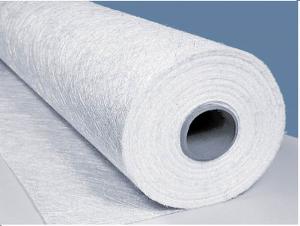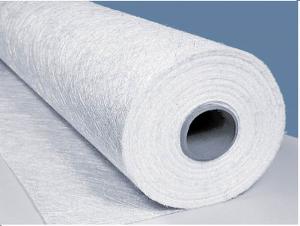E Glass Fiber CSM(Powder)
- Loading Port:
- China Main Port
- Payment Terms:
- TT or LC
- Min Order Qty:
- 22160 kg
- Supply Capability:
- 200000Kg Per Month kg/month
OKorder Service Pledge
OKorder Financial Service
You Might Also Like
1.Brief Introduction
E-Glass Powder Chopped Strand Mat is made of randomly distributed chopped strands held together by a powder binder.
It is compatible with UP, VE, EP, PF resins.
The roll width ranges from 50mm to 3300mm.
It is designed for use in hand lay-up, filament winding, compression molding and continuous laminating processes. Its end-use applications include boats, bath equipment, automotive parts, chemical corrosion resistant pipes, tanks, cooling towers and building components
2.Product Features
Fast breakdown in styrene
High tensile strength, allowing for use in hand lay-up process to produce large-area parts
Good wet-through and fast wet-out in resins, rapid air lease
Superior acid corrosion resistance
3.Product Specifications
Property | Area Weight | Moisture Content | Size Content | Breakage Strength | Width |
| (%) | (%) | (%) | (N) | (mm) |
Property | IS03374 | ISO3344 | ISO1887 | ISO3342 |
|
EMC80P | ±7.5 | ≤0.20 | 8-12 | ≥40 | 50-3300 |
EMC100P | ≥40 | ||||
EMC120P | ≥50 | ||||
EMC150P | 4-8 | ≥50 | |||
EMC180P | ≥60 | ||||
EMC200P | ≥60 | ||||
EMC225P | ≥60 | ||||
EMC300P | 3-4 | ≥90 | |||
EMC450P | ≥120 | ||||
EMC600P | ≥150 | ||||
EMC900P | ≥200 |

4.FAQ
Packaging:
Each Chopped Strand Mat is wound onto a paper tube which has an inside diameter of 76mm and the mat roll has a diameter of 275mm. The mat roll is wrapped up with plastic film,and then packed in a cardboard box or wrapped up with kraft paper. The rolls can be vertically or horizontally placed. For transportation, the rolls can be loaded into a cantainer directly or on pallets.
Storage:
Unless otherwise specified, Chopped Strand Mat should be stored in a dry, cool and rain-proof area. It is recommended that the room temperature and humidity should be always maintained at 15℃~35℃ and 35%~65% respectively.
- Q:Can fiberglass fabric be used for insulation in industrial ovens?
- Yes, fiberglass fabric can be used for insulation in industrial ovens. Fiberglass fabric has excellent thermal insulation properties, making it a suitable choice for insulating high-temperature environments like industrial ovens. It helps to retain heat within the oven and prevents heat loss to the surroundings, thereby enhancing energy efficiency and reducing operating costs. Additionally, fiberglass fabric is resistant to heat, fire, and chemical exposure, making it a durable and safe option for insulation in industrial ovens.
- Q:Can fiberglass fabric be used for insulation sleeves?
- Yes, fiberglass fabric can be used for insulation sleeves. Fiberglass is a commonly used material for insulation due to its high thermal resistance and excellent fire resistance properties. It is capable of withstanding high temperatures and can be woven into fabric form, making it suitable for creating insulation sleeves. These sleeves can be used to protect and insulate various components, such as pipes, wires, and cables, from heat or cold. The fiberglass fabric acts as a barrier, preventing heat transfer and providing insulation to the enclosed area. Additionally, fiberglass fabric is lightweight, flexible, and durable, making it easy to work with and long-lasting in insulation applications.
- Q:Are fiberglass fabrics resistant to oil or grease?
- Fiberglass fabrics, in general, possess resistance to oil and grease due to their non-absorbent nature and lack of reaction with these substances. Moreover, they frequently undergo treatment with a chemical finish or coating to further enhance their resistance against a range of substances, including oil and grease. Nevertheless, it is crucial to acknowledge that the degree of resistance can differ depending on the precise type and quality of the fiberglass fabric. Thus, it is advisable to review the manufacturer's specifications or seek guidance from a professional to ensure the fabric's compatibility with oil or grease in particular applications.
- Q:Can fiberglass fabrics be used for waterproofing?
- Yes, fiberglass fabrics can be used for waterproofing. Fiberglass is a versatile material that is commonly used in various industries, including construction and marine applications, due to its excellent water-resistant properties. When used as a fabric, fiberglass can be coated with waterproof materials such as silicone or polyurethane to enhance its waterproofing abilities. These coatings create a barrier that prevents water from penetrating the fabric, making it an effective choice for waterproofing purposes. Additionally, fiberglass fabrics are also resistant to mildew and rot, which further enhances their suitability for waterproofing applications.
- Q:How do fiberglass fabrics perform in terms of heat resistance?
- Fiberglass fabrics are known for their excellent heat resistance properties. Due to the inherent nature of glass fibers, which have a high melting point, these fabrics can withstand high temperatures without losing their structural integrity. Fiberglass fabrics are typically able to handle temperatures up to 1000 degrees Fahrenheit (537 degrees Celsius) without any significant deterioration. The heat resistance of fiberglass fabrics is beneficial in various applications. For instance, they are commonly used in industries such as aerospace, automotive, and construction, where exposure to high temperatures is common. Fiberglass fabrics are widely utilized as insulation materials, protecting against heat transfer and preventing potential fire hazards. Additionally, fiberglass fabrics exhibit good thermal stability, meaning they do not shrink or deform when subjected to temperature fluctuations. This makes them ideal for applications where thermal expansion and contraction are a concern. Moreover, fiberglass fabrics have a low thermal conductivity, meaning they do not readily transfer heat. This property allows them to act as effective thermal barriers, preventing heat from passing through and ensuring temperature control and insulation. In conclusion, fiberglass fabrics can be relied upon for their exceptional heat resistance. They can withstand high temperatures, maintain their structural integrity, and provide effective thermal insulation, making them a suitable choice for various heat-intensive applications.
- Q:How does fiberglass fabric perform in vibration isolation applications?
- Fiberglass fabric is commonly used in vibration isolation applications due to its excellent performance in this regard. The fabric's inherent properties, such as high tensile strength, flexibility, and low thermal conductivity, make it an ideal material for effectively isolating vibrations. When subjected to vibrations, fiberglass fabric absorbs and dampens the energy generated, thereby reducing the transfer of vibrations from one component to another. This ability to absorb vibrations is crucial in various industries, including automotive, aerospace, and construction, where minimizing vibrations is essential for optimal performance and safety. Additionally, fiberglass fabric's high tensile strength ensures that it can withstand the forces and stresses associated with vibrations without tearing or breaking. This strength is important for maintaining the fabric's integrity and effectiveness as a vibration isolator, as any damage to the fabric could compromise its performance. Furthermore, the flexibility of fiberglass fabric allows it to conform to different shapes and surfaces, ensuring a secure and tight fit in vibration isolation applications. This flexibility enables the fabric to effectively isolate vibrations across a wide range of frequencies and amplitudes, making it a versatile solution for various vibration control needs. Lastly, fiberglass fabric's low thermal conductivity is advantageous in vibration isolation applications where temperature differentials exist. By minimizing heat transfer, the fabric helps maintain the stability and performance of the isolated components, especially in environments with extreme temperatures. In summary, fiberglass fabric performs exceptionally well in vibration isolation applications due to its ability to absorb and dampen vibrations, high tensile strength, flexibility, and low thermal conductivity. Its effectiveness, versatility, and durability make it a preferred choice for industries requiring efficient vibration control.
- Q:Can fiberglass fabric be used for insulation in nuclear power plants?
- Yes, fiberglass fabric can be used for insulation in nuclear power plants. Fiberglass is a commonly used material for insulation in various industries, including nuclear power plants. It offers several advantages such as excellent thermal resistance, fire resistance, and low thermal conductivity. These properties make it suitable for insulating equipment and components in nuclear power plants where high temperatures and potential fire hazards are present. Additionally, fiberglass is also resistant to moisture, chemicals, and radiation, which are significant considerations in the nuclear industry. However, it is important to note that the specific application and required safety standards should be taken into account when selecting and installing insulation materials in nuclear power plants.
- Q:How much glass fiber cloth and how much epoxy resin does it take to make a square meter of fiberglass?
- However, these data are probably different, each kind of resin viscosity (thin consistency), the more concentrated the resin will use more, and alkali content of different fiber, eat the amount of resin will be different, good eating fiber resin will be a little less.
- Q:How to distinguish carbon fishing rod?
- Glass steel pole rough texture, mesh patterns, can be seen across the warp, weft. Carbon rod fine texture, no pattern wall, a black color, even some reticular pattern, and carbon fiber cloth, the fine, silvery white, glass and steel rods significantly different warp and weft weaving. Carbon pole strength, good conductivity, wear resistance, high temperature resistance, corrosion resistance characteristics.
- Q:Is fiberglass fabric suitable for making outdoor furniture covers?
- Yes, fiberglass fabric is suitable for making outdoor furniture covers. Fiberglass fabric is known for its durability and resistance to harsh weather conditions, making it an excellent choice for protecting outdoor furniture from rain, sun, and wind. It is water-resistant, UV-resistant, and can withstand extreme temperatures without deteriorating or fading. Additionally, fiberglass fabric is lightweight, making it easy to handle and install on furniture. It is also resistant to mold, mildew, and pests, ensuring that your furniture remains clean and protected. Overall, fiberglass fabric is a reliable and long-lasting option for making outdoor furniture covers.
1. Manufacturer Overview |
|
|---|---|
| Location | |
| Year Established | |
| Annual Output Value | |
| Main Markets | |
| Company Certifications | |
2. Manufacturer Certificates |
|
|---|---|
| a) Certification Name | |
| Range | |
| Reference | |
| Validity Period | |
3. Manufacturer Capability |
|
|---|---|
| a)Trade Capacity | |
| Nearest Port | |
| Export Percentage | |
| No.of Employees in Trade Department | |
| Language Spoken: | |
| b)Factory Information | |
| Factory Size: | |
| No. of Production Lines | |
| Contract Manufacturing | |
| Product Price Range | |
Send your message to us
E Glass Fiber CSM(Powder)
- Loading Port:
- China Main Port
- Payment Terms:
- TT or LC
- Min Order Qty:
- 22160 kg
- Supply Capability:
- 200000Kg Per Month kg/month
OKorder Service Pledge
OKorder Financial Service
Similar products
New products
Hot products
Related keywords






























